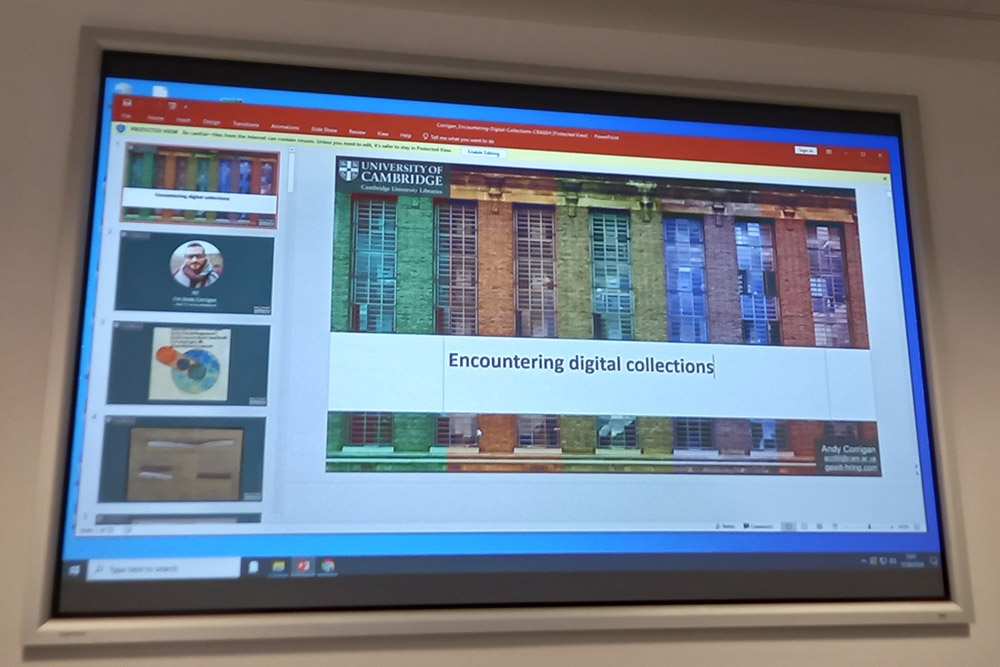(Re)Making connections with research libraries
by Rossitza Atanassova
In September I was invited by Andy Corrigan to take part in a two-day symposium entitled Encountering Digital Collections: Practical approaches in research and pedagogy, in support of Andy’s RLUK Professional Practice Fellowship project.
The event programme brought together the different perspectives of librarians, collections experts and researchers about creative experiences and engagement with library, archival and museum collections via digital media. Some of the recurrent themes were about the methods of interaction with physical and digital collections and spaces, the opportunities for professional development and upskilling, the empowerment of non–academic user groups to engage with collections and create knowledge, and the interdisciplinary collaborations that drive innovation and can contribute to well-being.
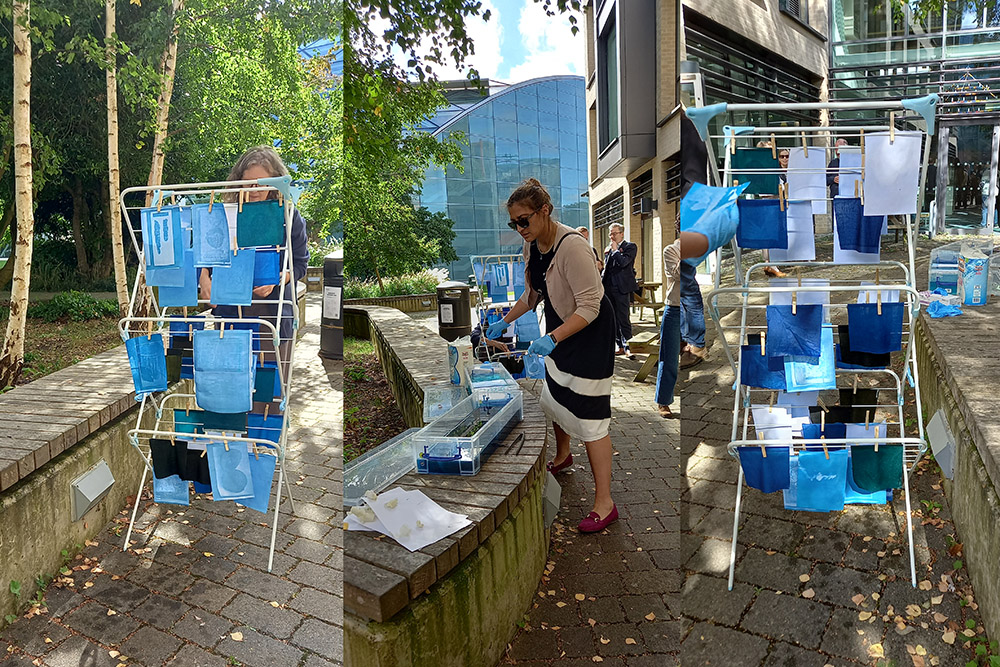
– Activity 1: Casting Light on Digital Ghosts. Creating a cyanotype print.
What made the symposium both enjoyable and inspirational were the informal conversations and partnerships during the interactive activities. Making cyanotypes blurred the lines between the digital and physical in the transformation of a physical collection item through its digital representation into a new artefact. Everyone approached the tasks differently and brought their own experience in the application of the process.
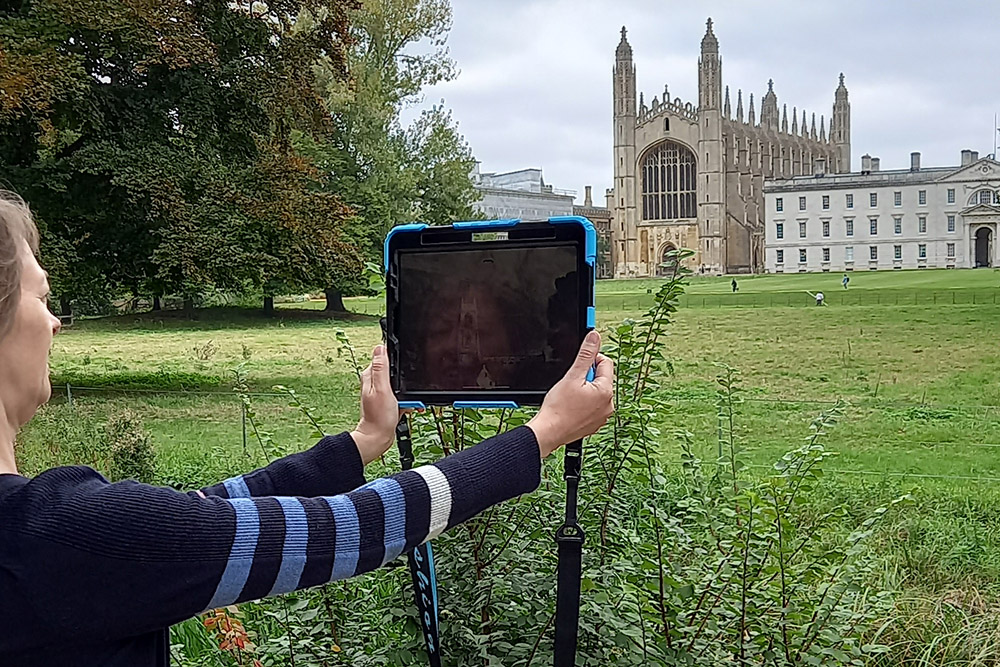
– Activity 3: Walking with Constable; Cambridge Edition. An augmented reality walk.
The virtual reality app by StoryFutures we used to experiment with making 3D models of ourselves, was both fun and educational – reflective surfaces such as spectacles can be a challenge for 3D technology. Viewing historical Cambridge though an augmented reality lens using topographical prints and historical photographs (Walking with Constable) brought to live the city landscape and its industrial, social and university histories. And it was interesting to see participants’ reaction to the VR experience of the University of Bristol Museum – only few of us felt comfortable with the VR headset on.
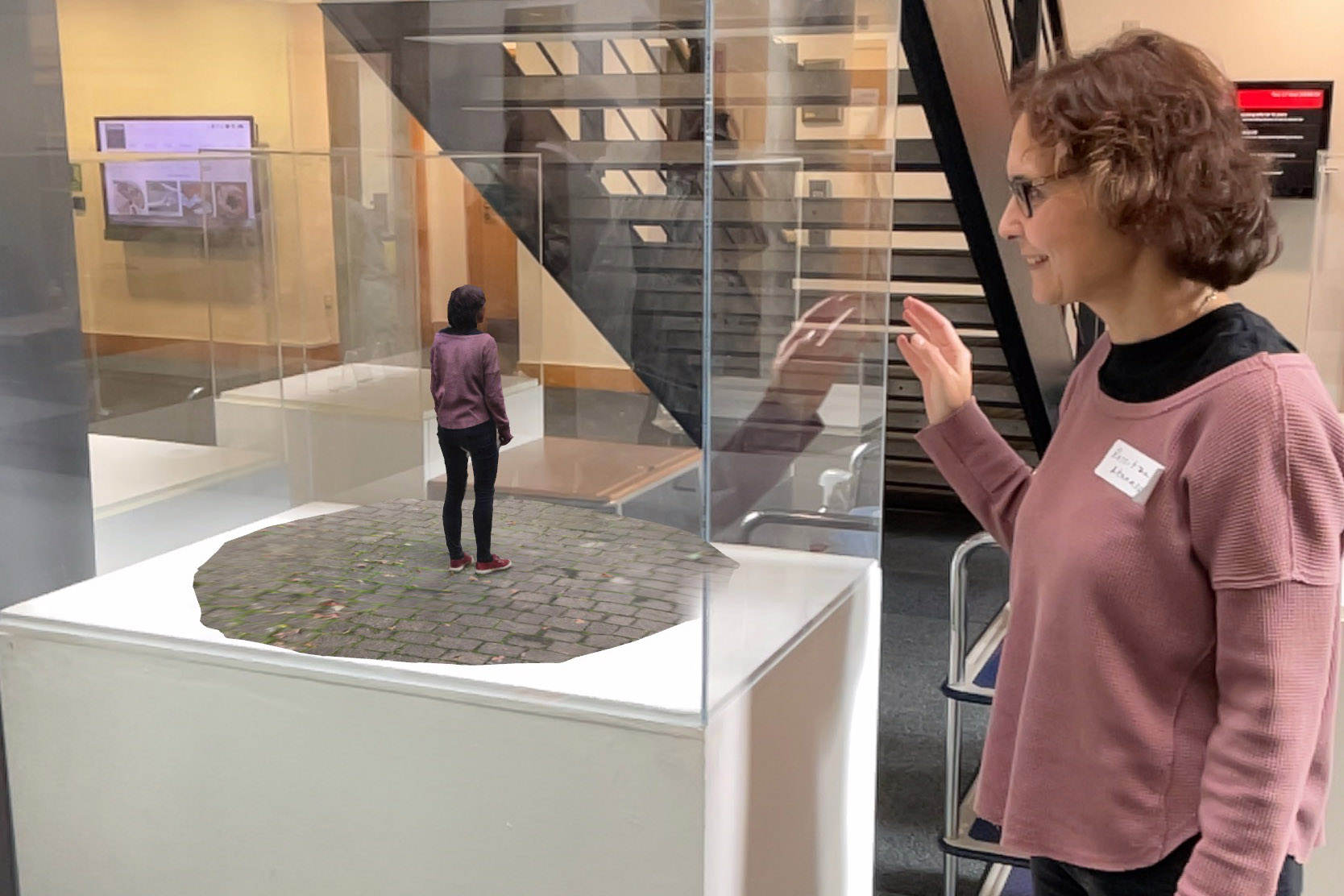
– Activity 2: Big Me Little Me. Creating a 3D avatar. Facilitated by the StoryFutures Team
Many of the talks and conversations focused on the challenges for librarians: how to best engage users with physical collections that are underused (Project Re:Book) and create stimulating and innovative learning experiences (TU Delft Collection Wall and Leeds University Digital Creativity and Cultures Hub); how to enable uncomfortable conversations and challenge norms of access to archives (Re-entangling the Visual Archive) and bring the perspectives of ‘non-traditional’ researchers (Edinburgh University Library Participatory Research) and under-represented groups (The Creative Library Project).
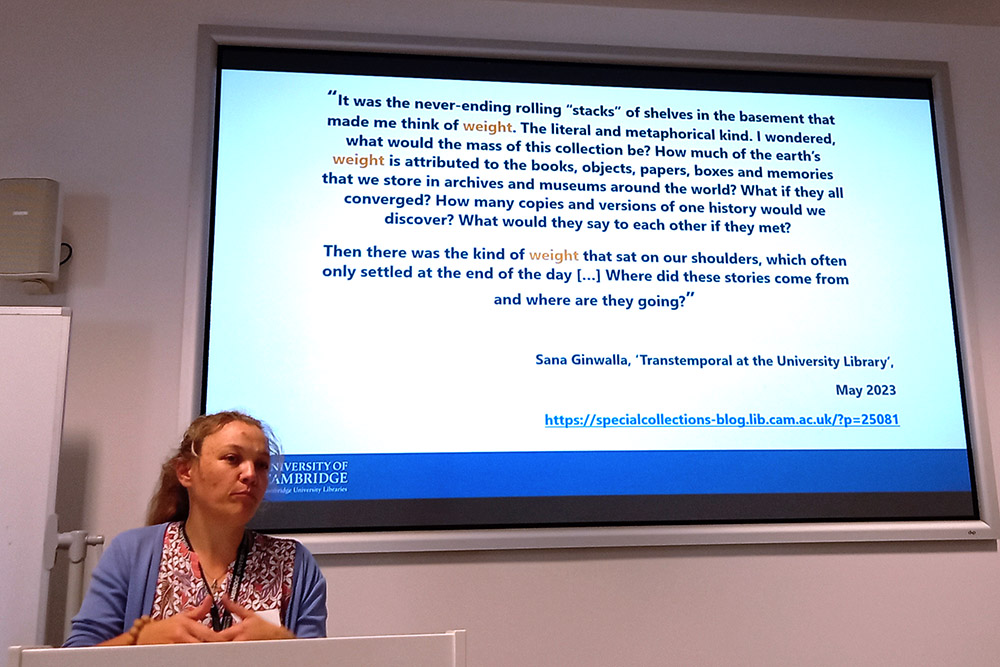
– Sally Kent discusses the weight of archives.
Simultaneously, the projects and case studies provided some great examples of GLAM professionals’ research, critical and creative thinking and interventions that brings about collaborations between staff, artists, researchers and communities to improve collections knowledge and user experiences.
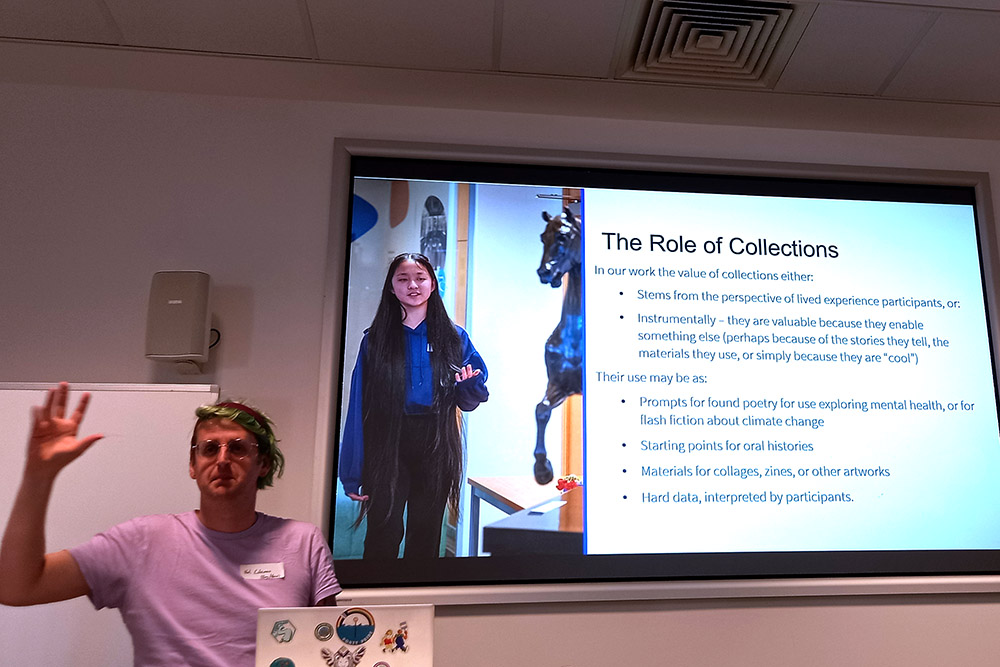
– Nel Coleman talks about the role of collections.
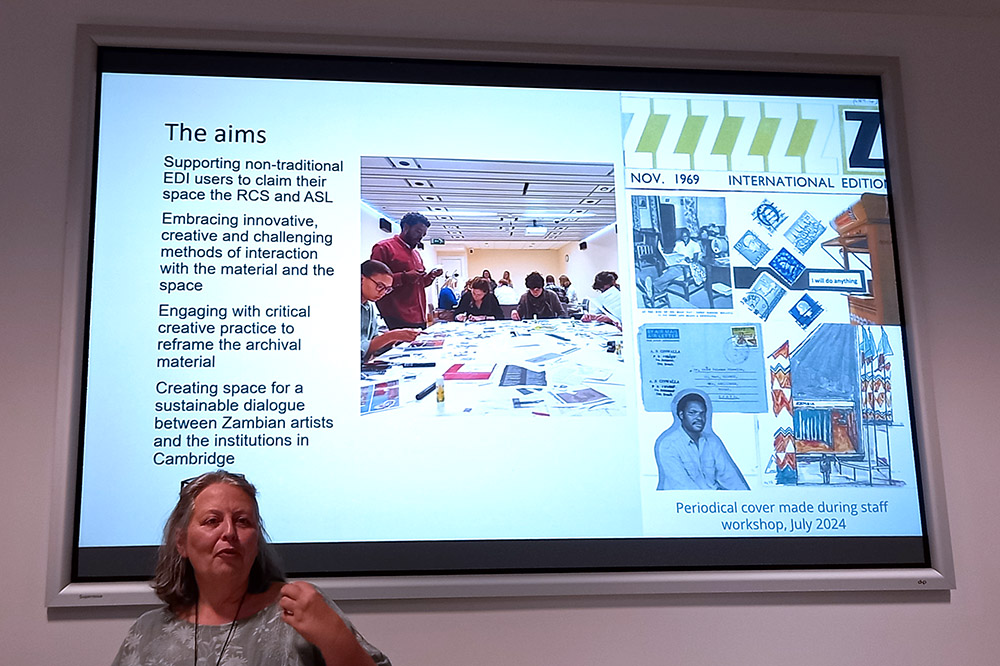
– Kerstin Hacker discusses the visual archive.
Part of the second day centred on storytelling as a method for discussing difficult topics and sharing lived experience, which generated a lively discussion about how we preserve such stories and credit the people. Prof. Bassett’s talk questioned the accessibility of mass digital content and discussed the value of immersive and meaningful experiences with collections. We were inspired by Becky Scott’s research project that captures librarians’ professional narratives as poems. This also raised the important topic about how best to facilitate and recognise research by library practitioners, which is the aim of the AHRC-RLUK Professional Practice Fellowship programme.
Appropriately, William Nixon, RLUK Deputy Executive Director, closed the symposium with a summary of the stimulating talks and discussion threads from the two days, which Andy will impart in his research project outputs and recommendations.
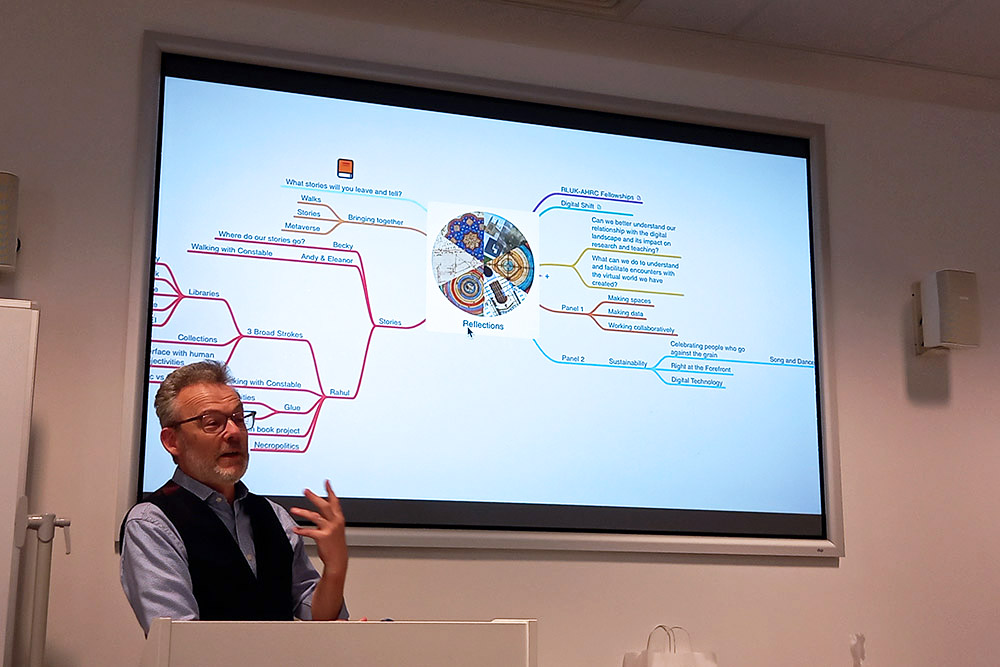
– William Nixon reflects on the event.
Thank you Andy for a wonderful two days of (re)making connections with (digital) collections, research methods, inspiring people and diverse communities.
[Addendum from Andy:] Before the symposium took place, I asked Rossitza, and all of the speakers, to select an item or two from the Cambridge Digital Library that they could relate to in some way. The two items here were Rossitza’s suggestions. These were used as source material during ‘Activity 1: Casting Light on Digital Ghosts, creating a cyanotype print.’
This post has been funded by the AHRC-RLUK Professional Practice Fellowship Scheme for research and academic libraries.
